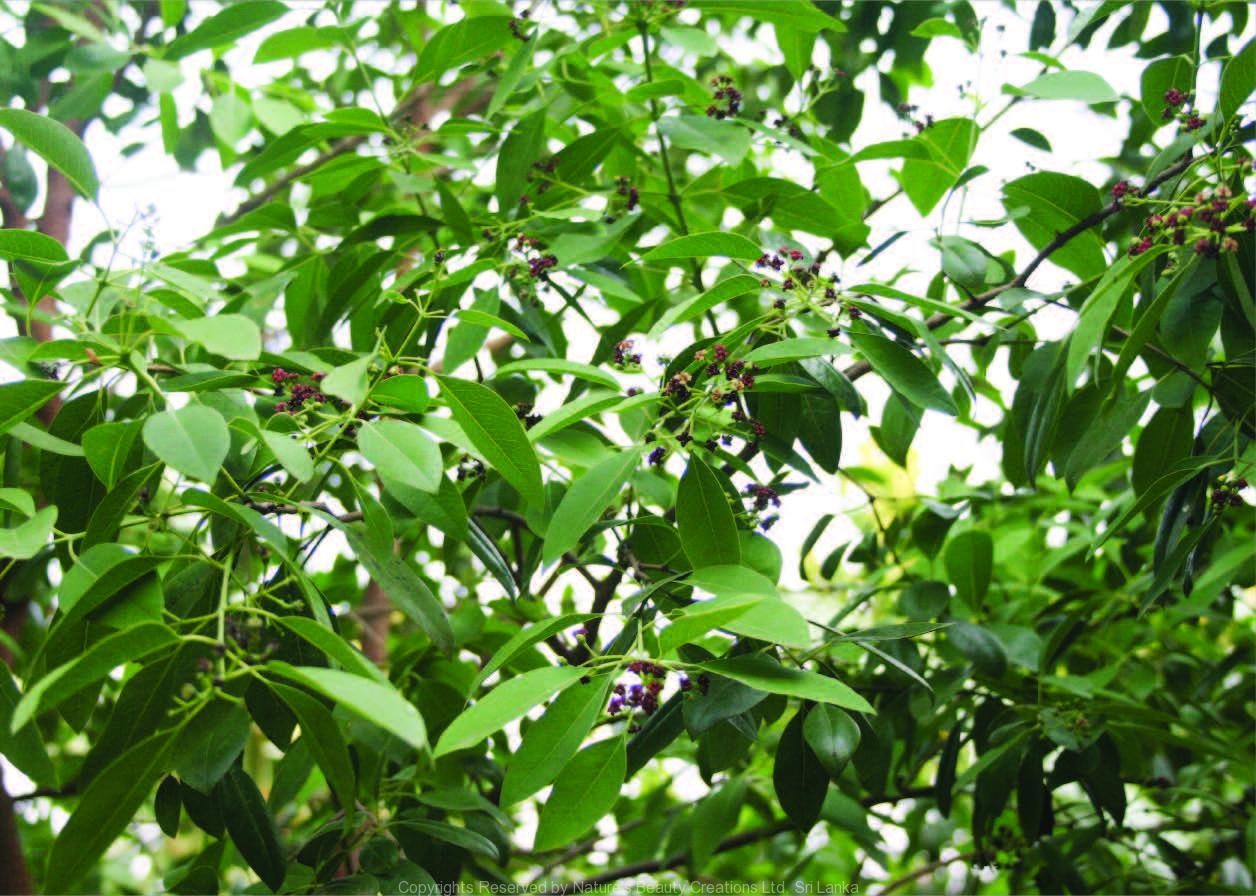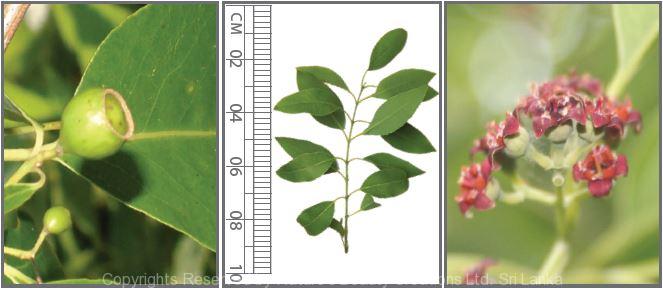

Traditional Knowledge
Useful plant parts :
Heartwood, seed and leaf
Uses in traditional medicine :
- Heartwood powder in lime juice is applied gently on pimples and for skin diseases
- Salad prepared of young leaves is taken to recover from gastric acidity
- Acts as a diaphoretic, diuretic and antipyretic
- Used for fever, diarrhoea, dysentery, spermatorrhoea and local inflammations
Scientific Research
Chemical constituents:
Sesquiterpenes: α and β-santalols, santalais, santaldiols and santalenoic acid from plant chips; tannins, terpenes, resins and waxes from wood oil; allohydroxy-L-proline, flavonoids: vicenin, vitexin, isovitexin, orientin, isoorientin and isorhamnetin from leaf; bisabolane and santalane sesquiterpenes from heartwood
Bioactivity :
Methanol extract of leaves and stem: antibacterial, anti-inflammatory, antioxidative; santalols: prevents UVB induced skin cancer, neuroleptic activity; wood oil: antiviral against HSV-1 and 2; petroleum ether extract of plant: antihyperglycaemic, antihyperlipidaemic
Clinical:
α-santalol shows a sedative/relaxing effect on human after transdermal absorption
References : Adams, D. R. et al., (1975), Sesquiterpenes of Santalcm album and Santalum spicatum, Phytochemistry, 14, 1459-1460. Benencia, F. and Courreges, M. C., (1999), Antiviral activity of sandal- wood oil against Herpes simplex viruses-1 and -2, Phytomedicine, 6(2), 119-123. Bommareddy, A. et al., (2007), Chemoprevention by -Santalol on UVB Radiation-induced Skin Tumor Development in Mice, Anticancer Research, 27, 2185-2188. Choi, E. M. and Hwang, J. K., (2005), Screening of Indonesian medicinal plants for inhibitor activity on nitric oxide production of RAW264.7 cells and antioxidant activity, Fitoterapia, 76, 194–203. Hongratanaworakit, T. et al., (2004), Evaluation of the Effects of East Indian Sandalwood Oil and α-Santalol on Humans after Transdermal Absorption, Planta Med, 70(1), 3-7. Kim, T. H. et al., (2005), Aromatic Constituents from the Heartwood of Santalum album L., Chemical & Pharmaceutical Bulletin, 53(6), 641—644. Kim, T. H. et al., (2005), Bisabolane- and santalane-type sesquiterpenoids from Santalum album of Indian origin, J Nat Prod, 68(12), 1805-8. Kim, T. H. et al., (2006), New antitumor sesquiterpenoids from Santalum album of Indian origin, Tetrahedron, 62, 6981–6989. Kulkarni, C. R. et al., (2012), Antihyperglycemic and antihyperlipidemic effect of Santalum album in streptozotocin induced diabetic rats, Pharm Biol, 50(3), 360-5. Okugawa, H. et al., (1995), Effect of a-Santalol and β-Santalol from sandalwood on the central nervous system in mice, Phytomedicine, 2(2), 119-126. Parekh, J. and Chanda, S. V., (2007), In vitro Antimicrobial Activity and Phytochemical Analysis of Some Indian Medicinal Plants, Turkish Journal of Biology, 31, 53-58. Radhakrishnan, A. N. and Giri, K. V., (1954), The isolation of allohydroxy-l-proline from sandal (Santalum album L.), Biochemical Journal, 58(1), 57–61. Sindhu, R. K. et al., (2010), Santalum album linn: a review on morphol- ogy, phytochemistry and pharmacological aspects, International Journal of PharmTech Research, 2(1), 914-919. Yan, C. et al., (2011), Study of flavonoids from leaves of Santalum album, Zhongguo Zhong Yao Za Zhi, 36(22), 3130-3.
Copyrights Reserved By
Natures Beauty Creations




